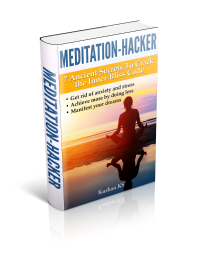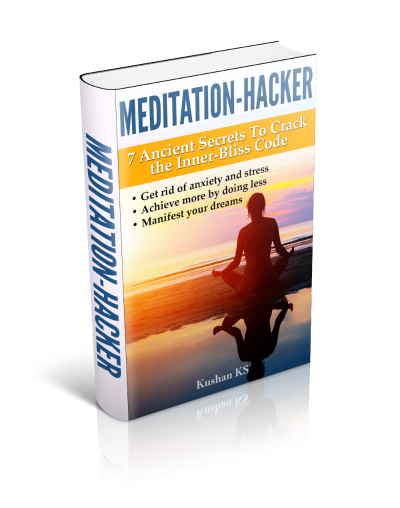Stages of Meditation
"If we do not control the mind, we will achieve nothing" - Geshe Rabten

There are nine stages of meditation through which a meditator usually progresses, more or less in order, though it is quite possible to sometimes fall back to an earlier stage.
This regression, however, should not be a cause of worry.
Meditation is a natural process, which uniquely unfolds for each of us. There is no race to "reach" the various stages by a fixed time-table.
In any case, these meditation stages serve as mere signposts on our path to inner-discovery and are not destinations to be arrived at. So avoid getting caught up in their 'achievement' or 'non-achievement.'
Like life itself, meditation too is not a linear journey. It is a wave-like forward movement with its own crests and troughs.
There will be times when you will feel stuck in your practice. Nothing you do will bring your focus back. You will feel like a scatter-brain.
At such times, it is important not to lose sight of the end goal.
The resistance or blockage you experience is nothing but old sanskaras (impressions) on their way out. It usually is a temporary set-back, before the next quantum leap in your awareness takes place.
Getting discouraged and discontinuing the practice, just when things could be coming together for a push higher, would be self-defeating.
So keep the faith and focus on maintaining a daily practice, above all else. You are bound to be successful!
On to the nine stages of meditation:
1. Placing the mind
In this first stage, you spend more time being distracted, naturally, than you do focusing on the object of meditation.
Good news because the only way from here is up.
2. Placement with continuity
Most of your meditation session is still distracted, but you can sometimes hold the object of concentration for two minutes or more, before being interrupted by gross agitation or dullness.
3. Patch-like placement
By now, majority of your time is spent engaged with the chosen object of meditation.
Also, when you lose the object through distraction or dullness, you find it easier to resume concentration as mindfulness is improving.
4. Close placement
While you still experience periods of agitation and dullness, you can now hold the object of meditation over longer periods of time - between five to ten minutes of duration at one go.
5. Controlling
In stage five, you can now meditate for an entire session without your concentration being disrupted by gross agitation or dullness.
You still experience subtle agitation or dullness.
Subtle dullness is the particular challenge.
6. Pacifying
You are now able to meditate for the entire session without your concentration being disturbed.
You also experience only a small degree of subtle agitation or dullness.
Subtle agitation is the particular challenge.
7. Complete pacification
Your concentration has improved to the point that if any subtle agitation or dullness arises, you are able to quickly overcome it through your greatly increased power of concentration.
8. Single-pointed concentration
You are now able to hold the object of concentration completely throughout the whole session with only slight effort required at the start of the session.
9. Placement with equanimity
In this final stage, you are able to concentrate on an object of meditation for any length of time without effort.
Since you were keen on knowing the different stages of meditation, I would assume that you probably already practice some type of meditation.
If you do, then you can use the four mindfulness meditation techniques to complement your existing practice.
On the other hand, if you are just starting out and would like to know where to begin, then read through the beginner's guide to meditation.
In addition to other resources, it lists some basic meditation exercises and a couple of beginner meditation techniques.

Get my book, Meditation-Hacker: 7 Ancient Secrets to Crack the Inner-Bliss Code and receive valuable information on meditation that you can use to improve the quality of your health and life.
Return from Stages of Meditation to Home


Comments
I would love to hear your meditation experiences. And, if you are a beginner, your questions and apprehensions about meditation. Comment below or contact me directly through the navigation bar on the left of this page.